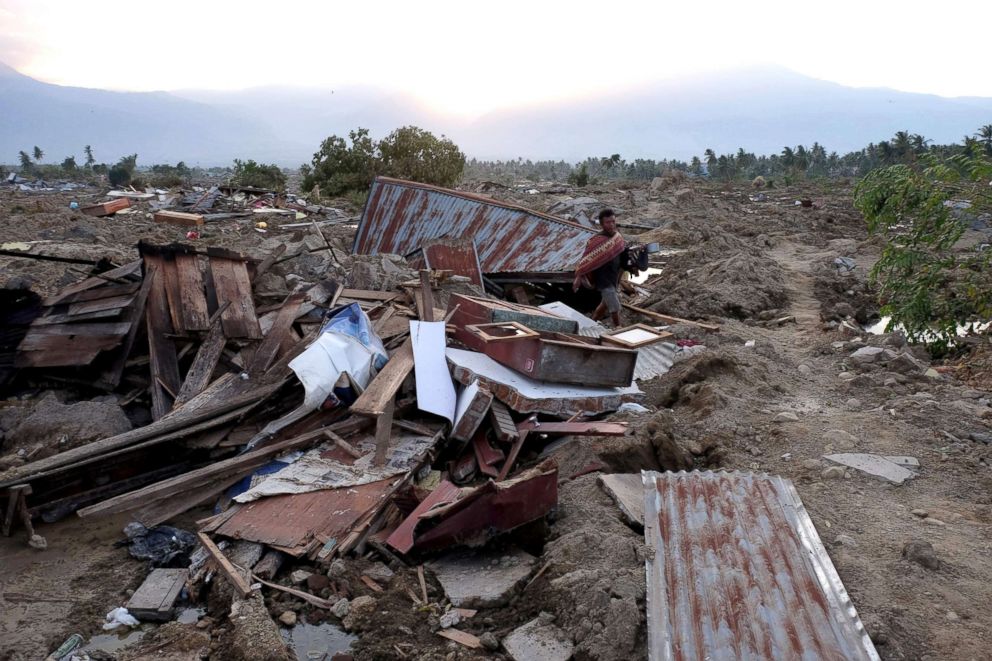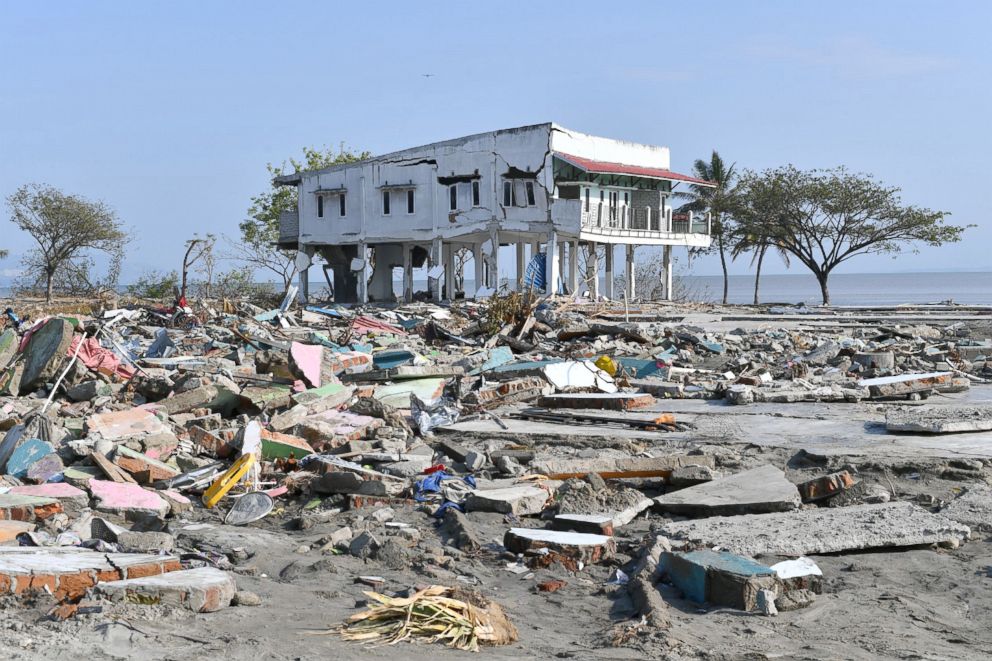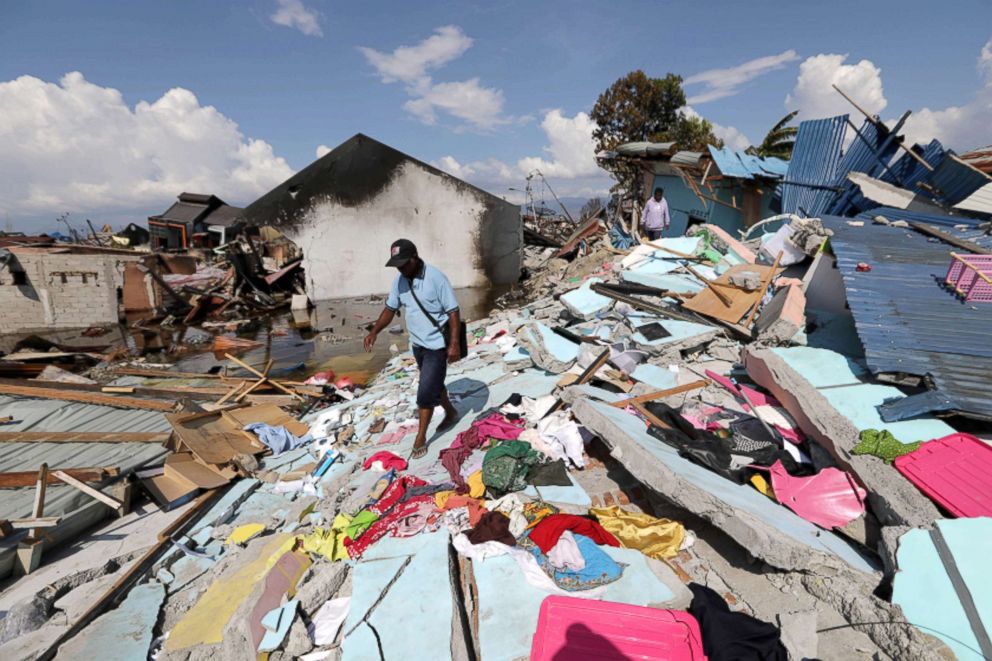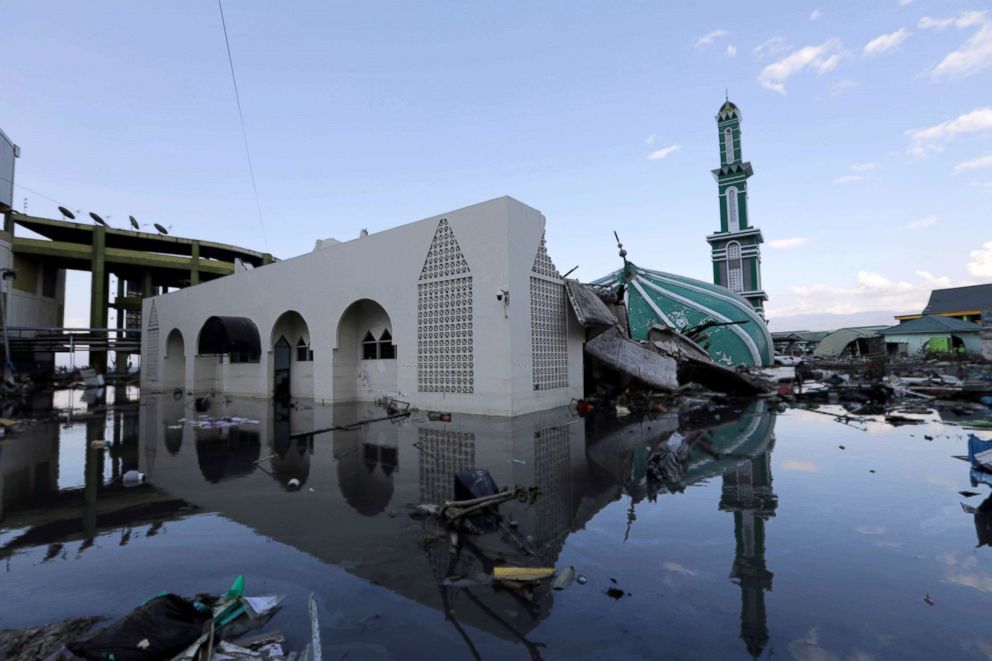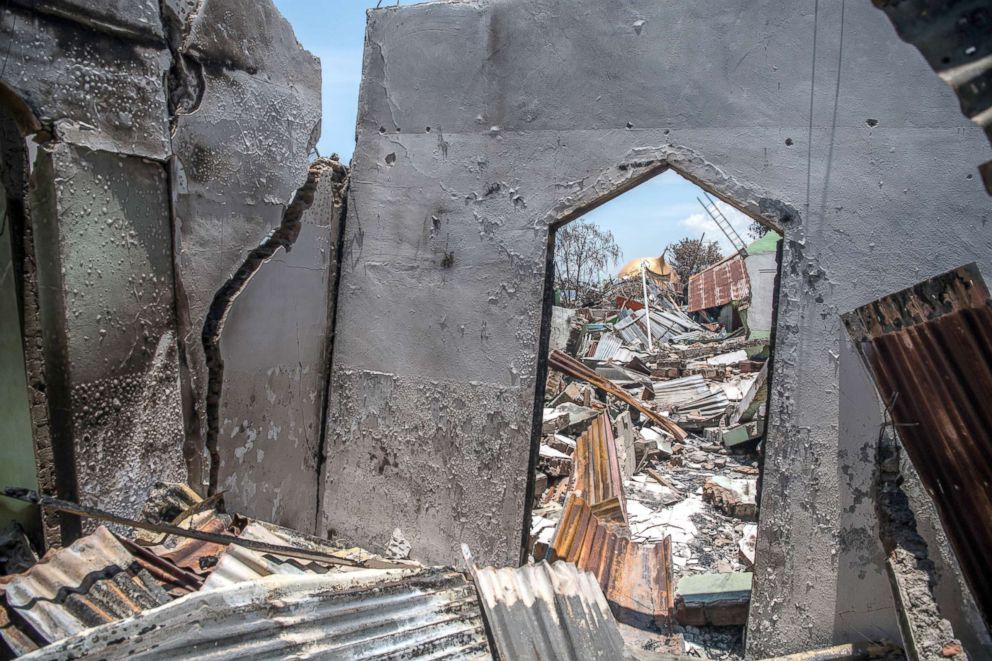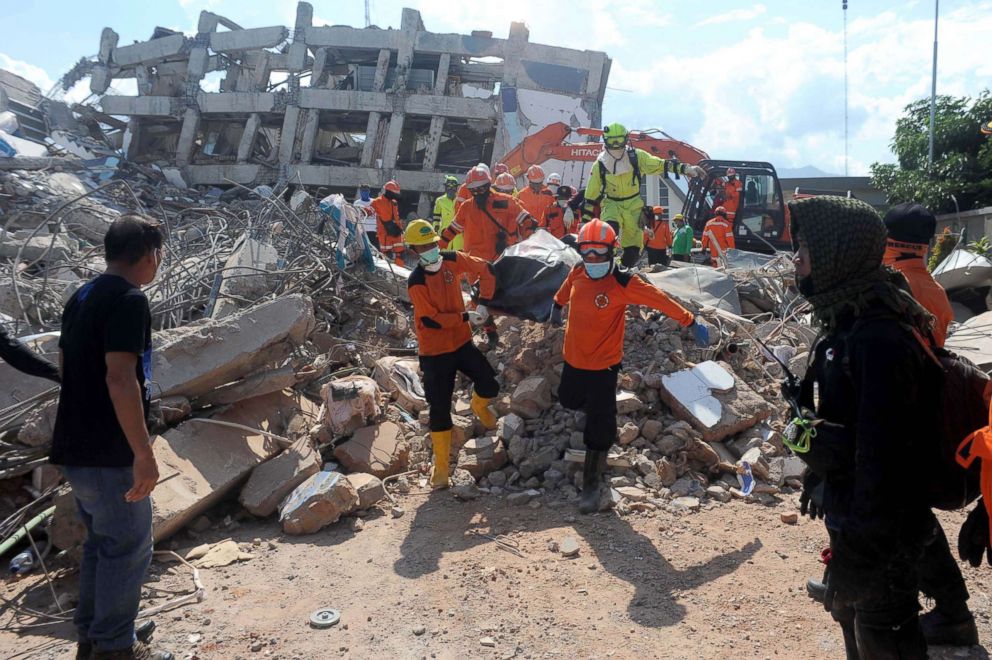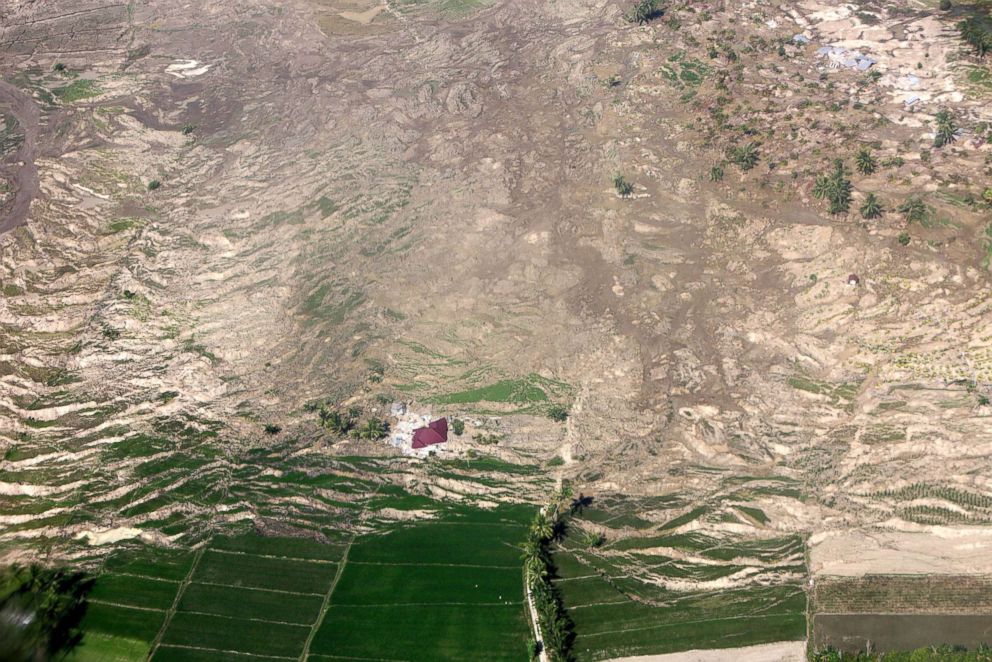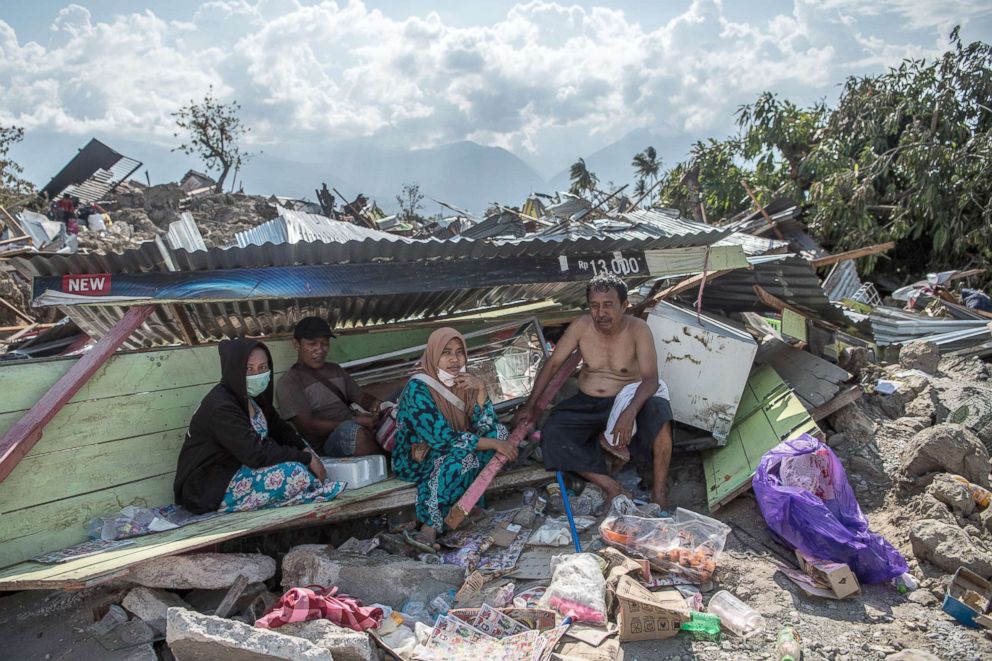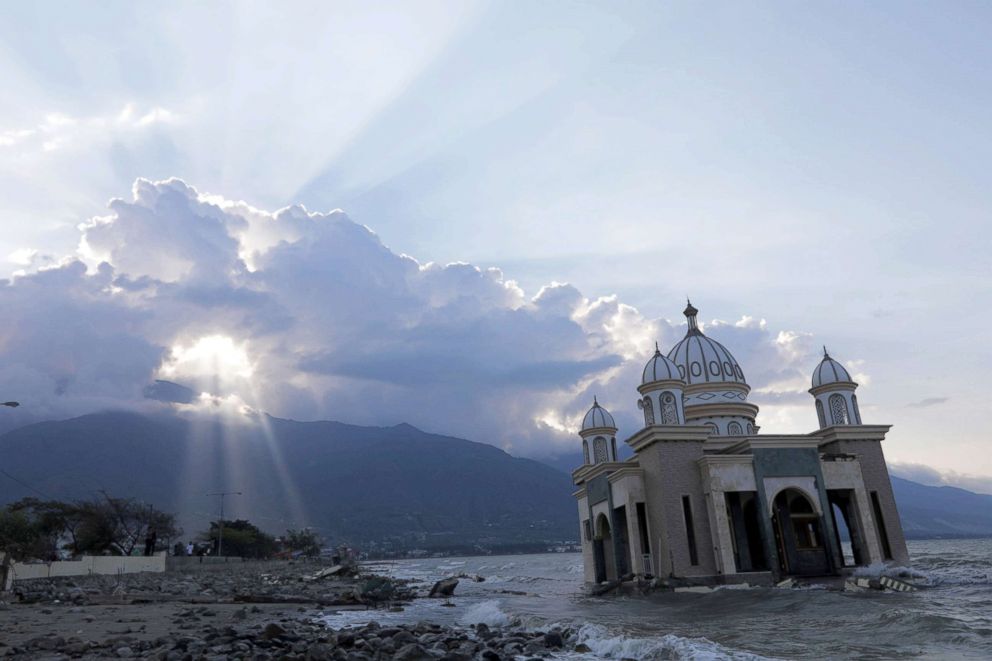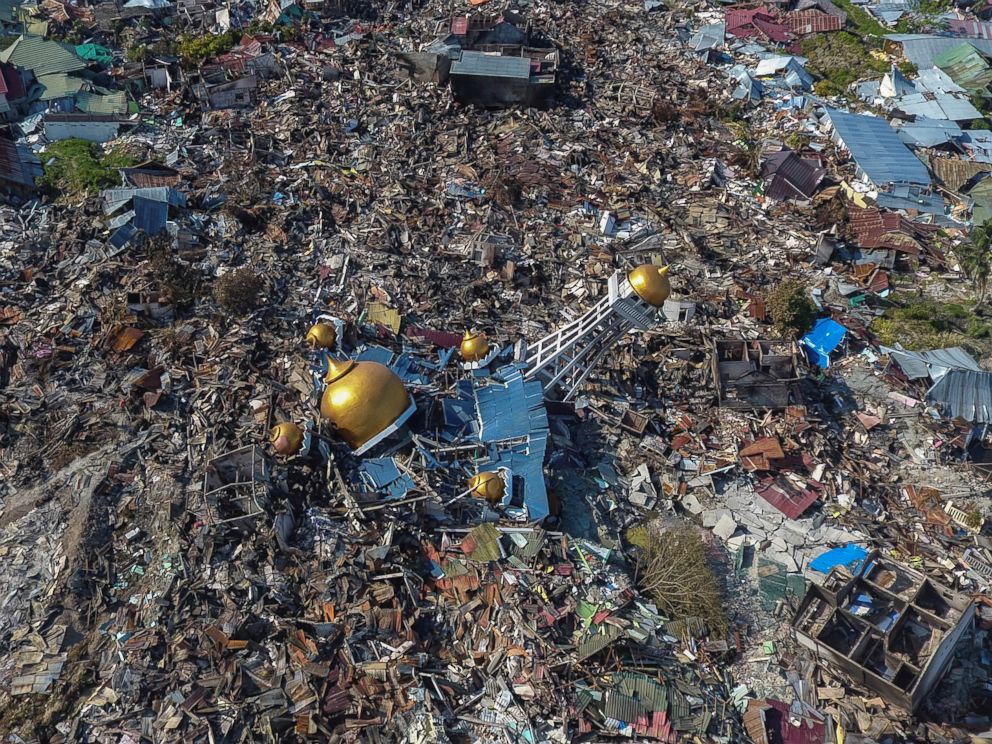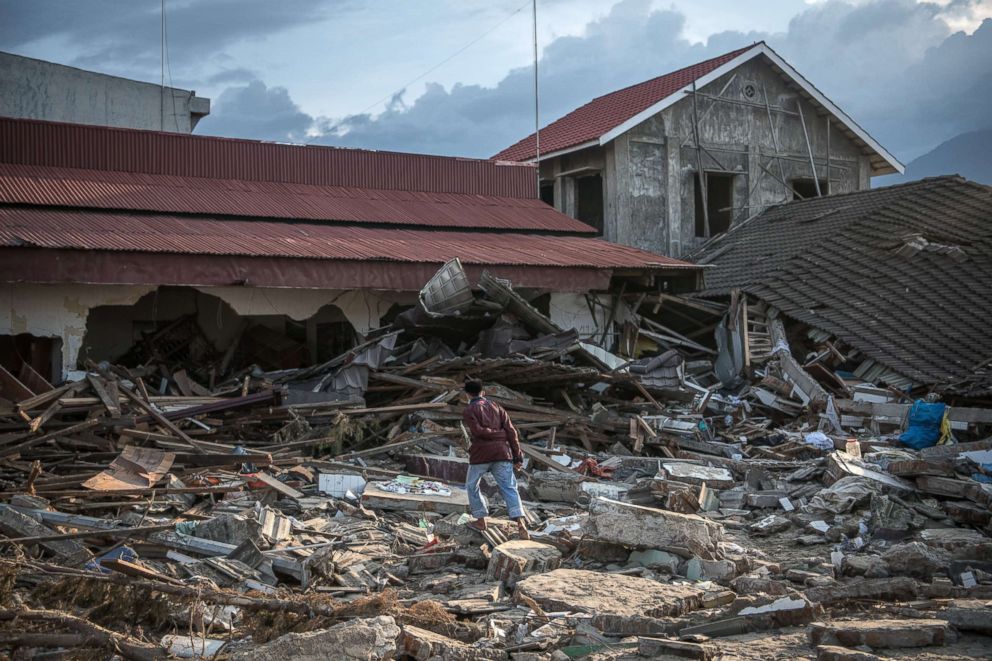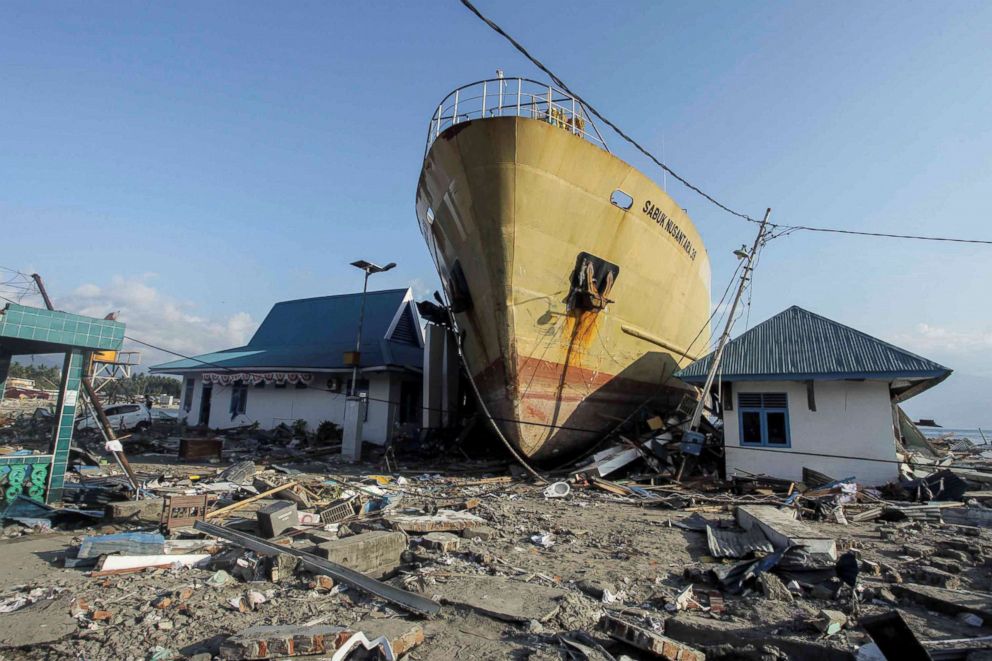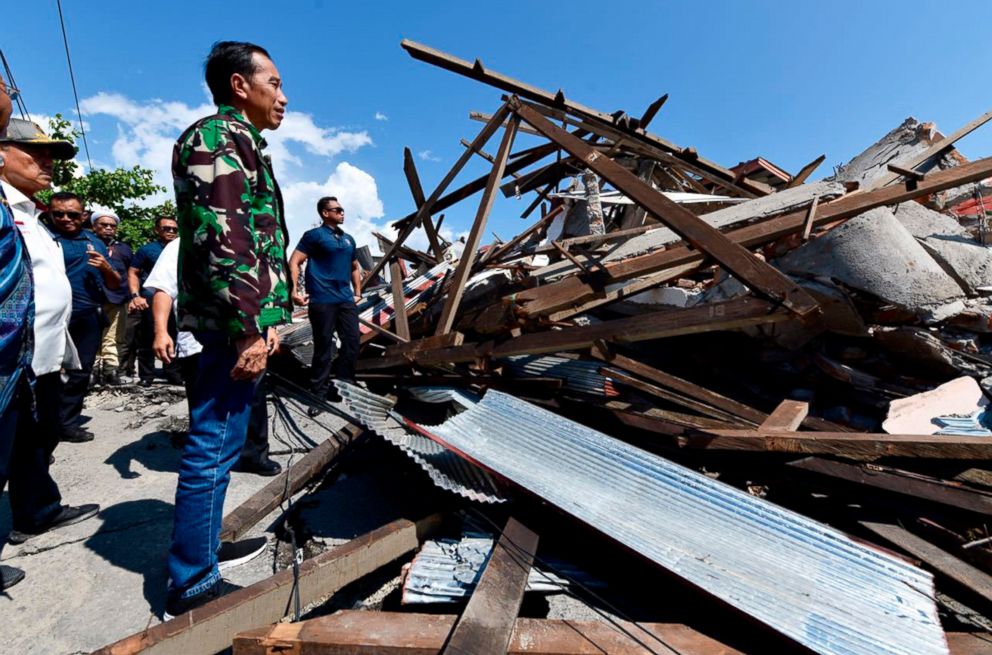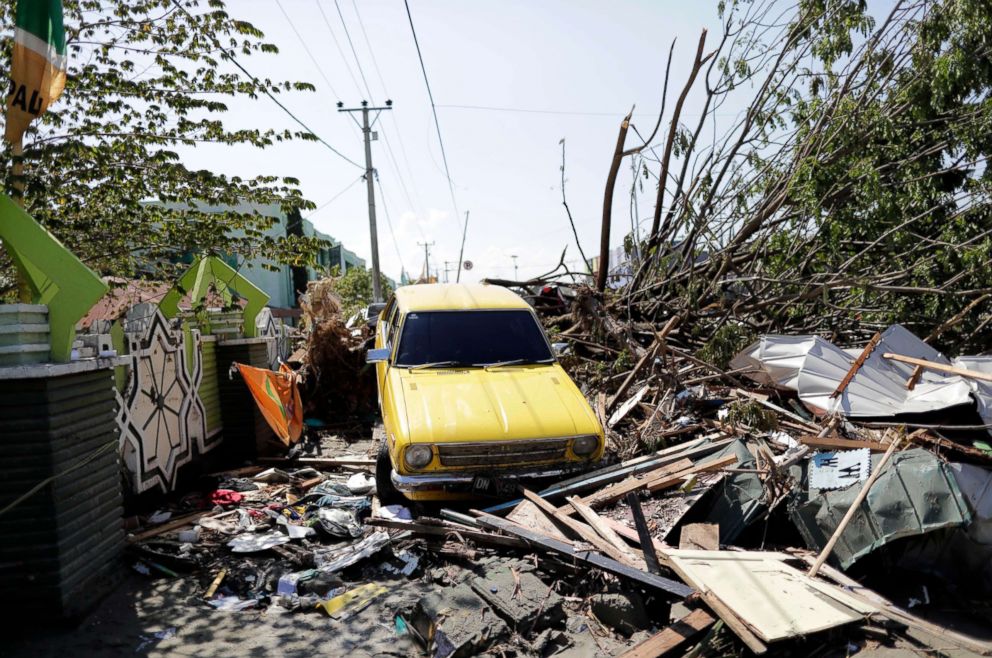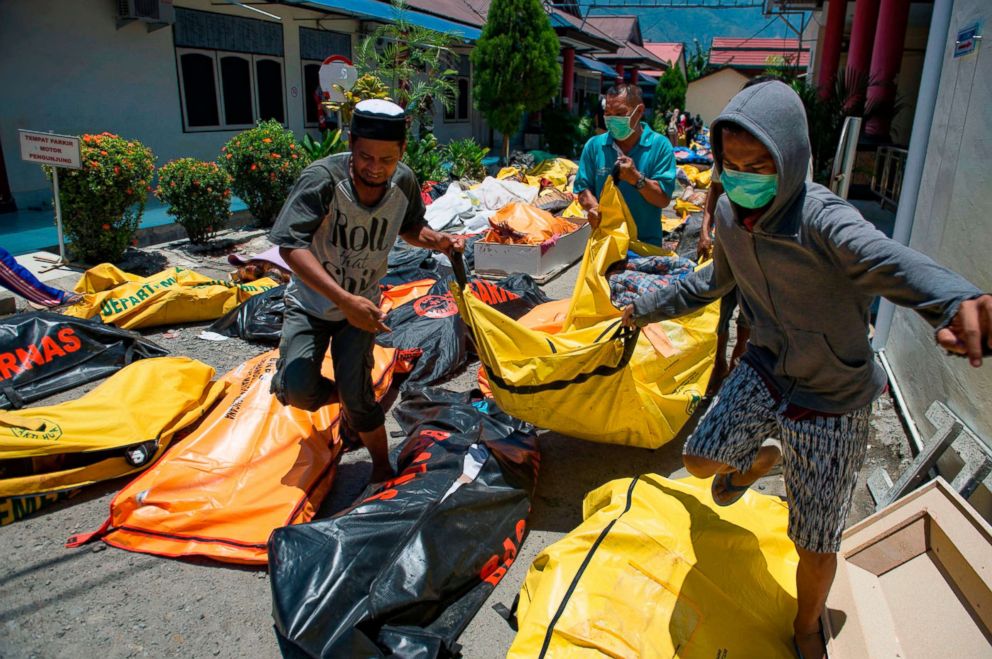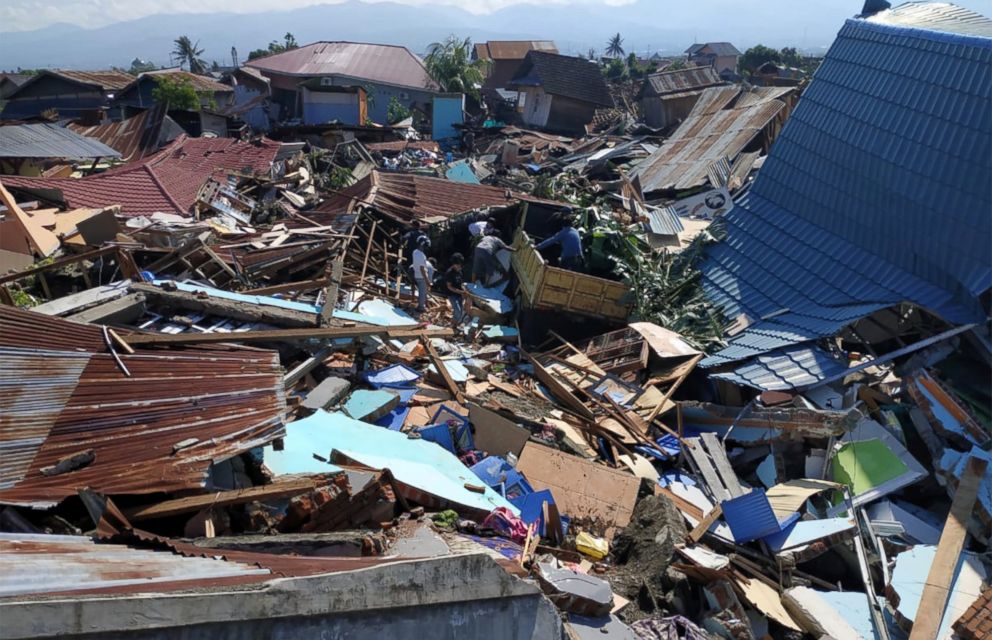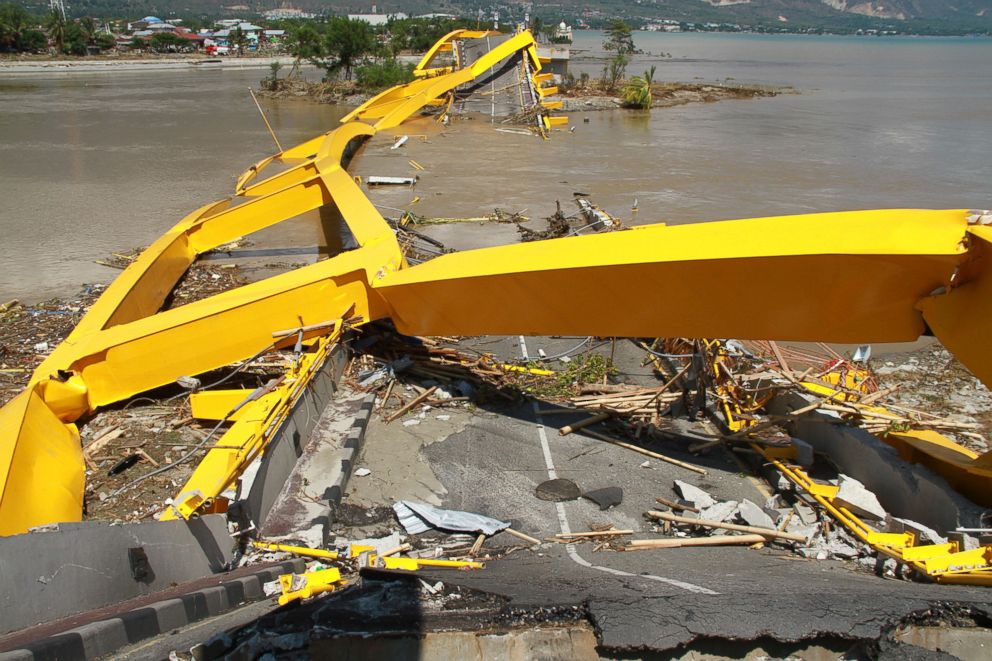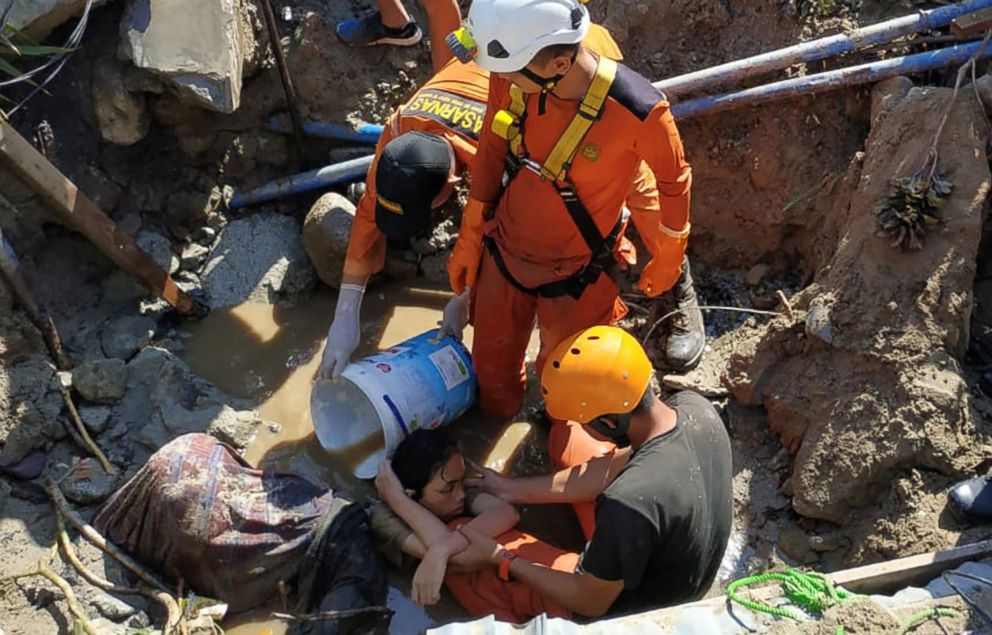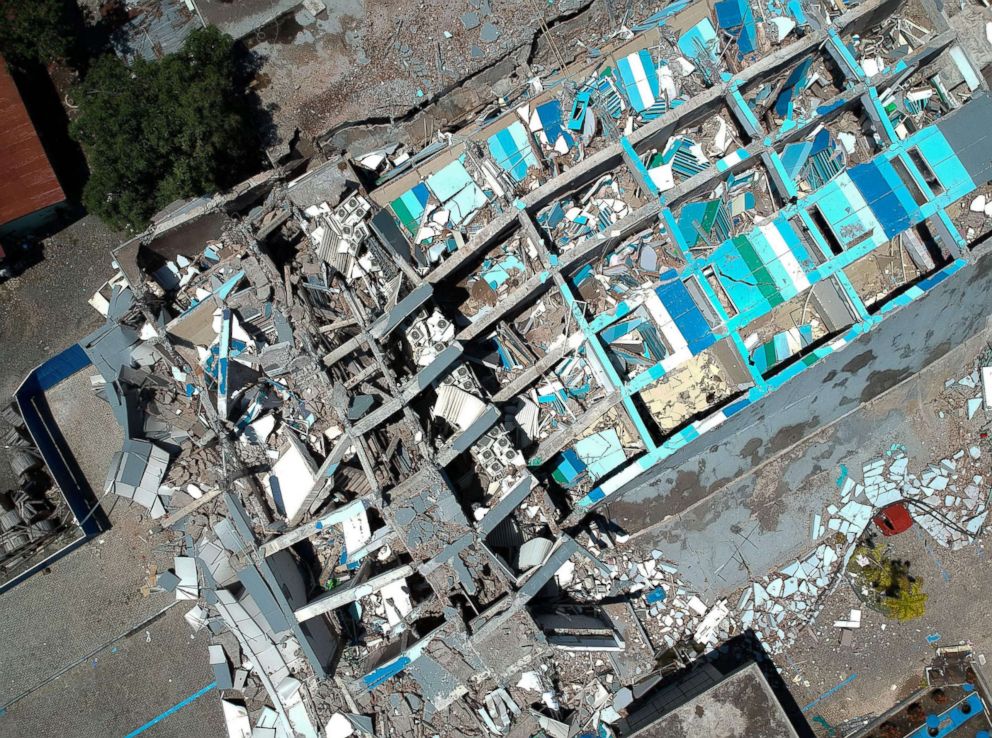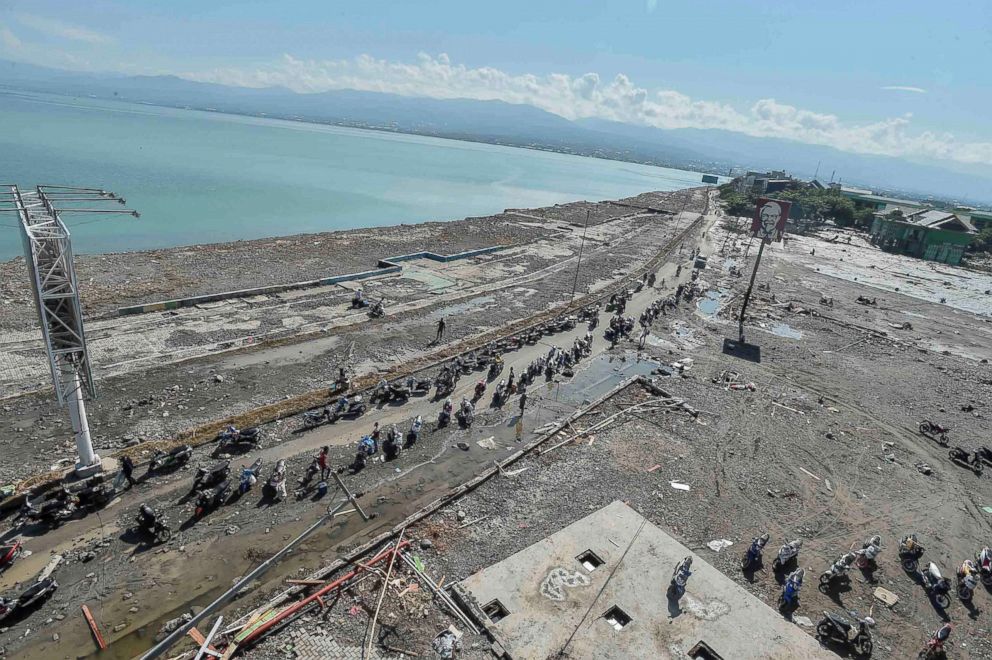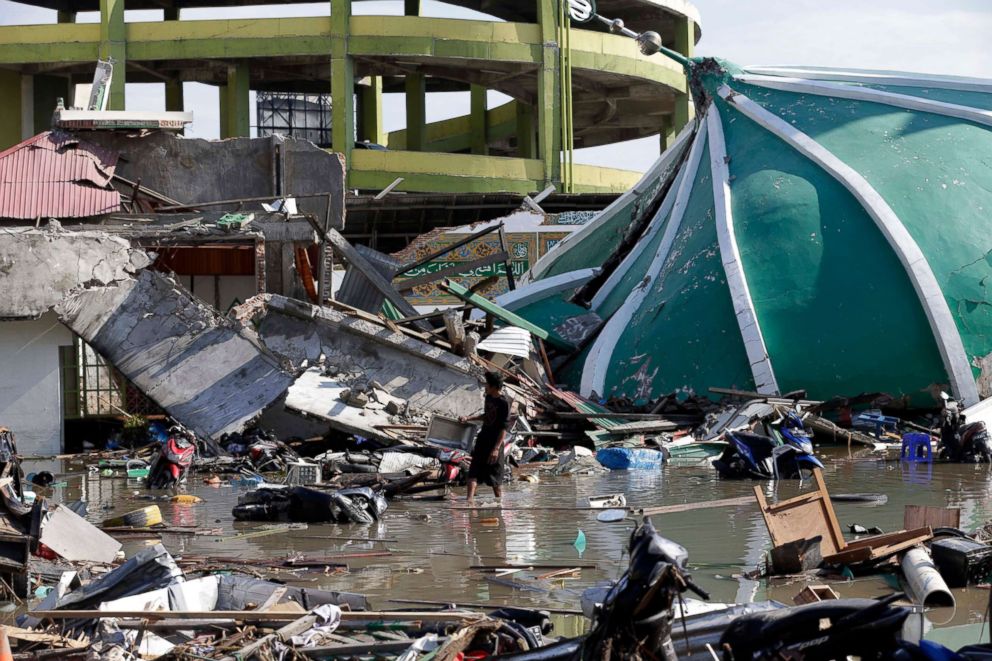Reporter's Notebook: Escaping Indonesia's disaster zone
ABC News' James Longman spent the past week in and around Palu, Indonesia.
We were told it would be 10 hours. But the drive through the night from Palu to Gorontalo, Indonesia, took 18.
As the nearest functioning airport capable of getting us off Sulawesi, it’s a route we shared with many trying to get out of the disaster zone. Along pot-holed dirt tracks, through jungle and tiny villages, it all had one lasting theme: complete darkness. The power outages seemed to go for miles.
Indonesia earthquake and tsunami
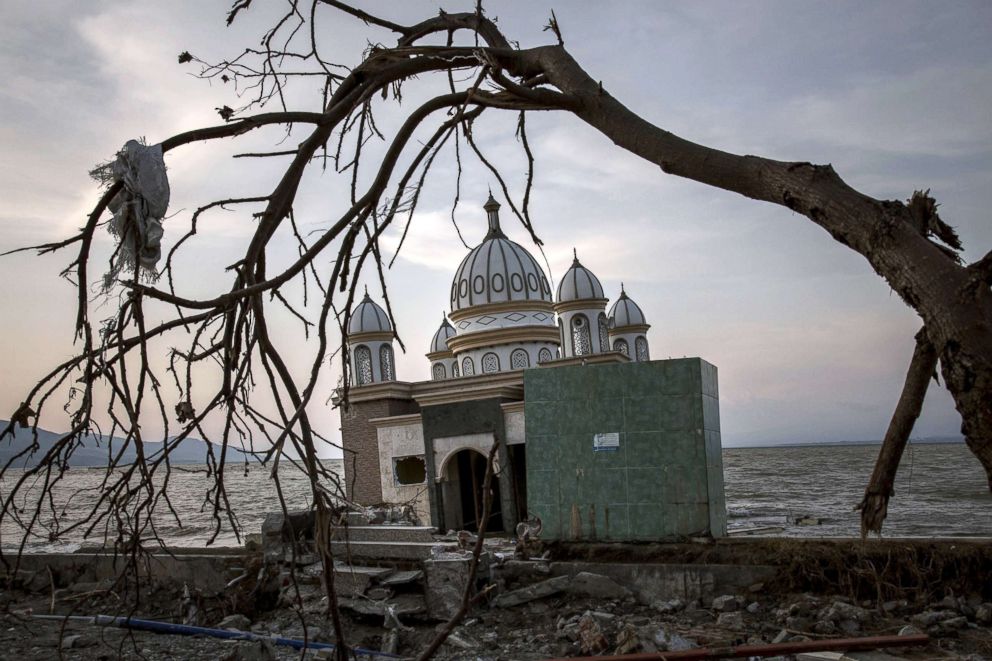
Sleep was not possible. The roads were almost unusable in places, and our driver -- spurred on no doubt by his curious mix of Chinese trance music and American rock -- seemed intent on destroying any suspension his car once enjoyed.
At small road-side cafes we paused for rest -- pulling up alongside motorbikes piled high with the belongings of the homeless. From my spot on the floor of one such place I lay staring at a bike almost invisible under boxes, cartons and canisters of fuel. Only after a few moments did I notice the small face of a young girl among these objects, wrapped in all the clothes she could salvage. She was looking at me, wondering perhaps where I was going, just as I was her.
The devastation we’d left behind in Palu was only really becoming clear -- a full week after the earthquake and tsunami had hit.
Away from the coast that the tsunami had decimated, and the center of town the earthquake had demolished, we found a third tragedy: landslides. We traveled to a more remote neighborhood in search of a church in which we’d heard a group of children on a Bible study camp had been killed.
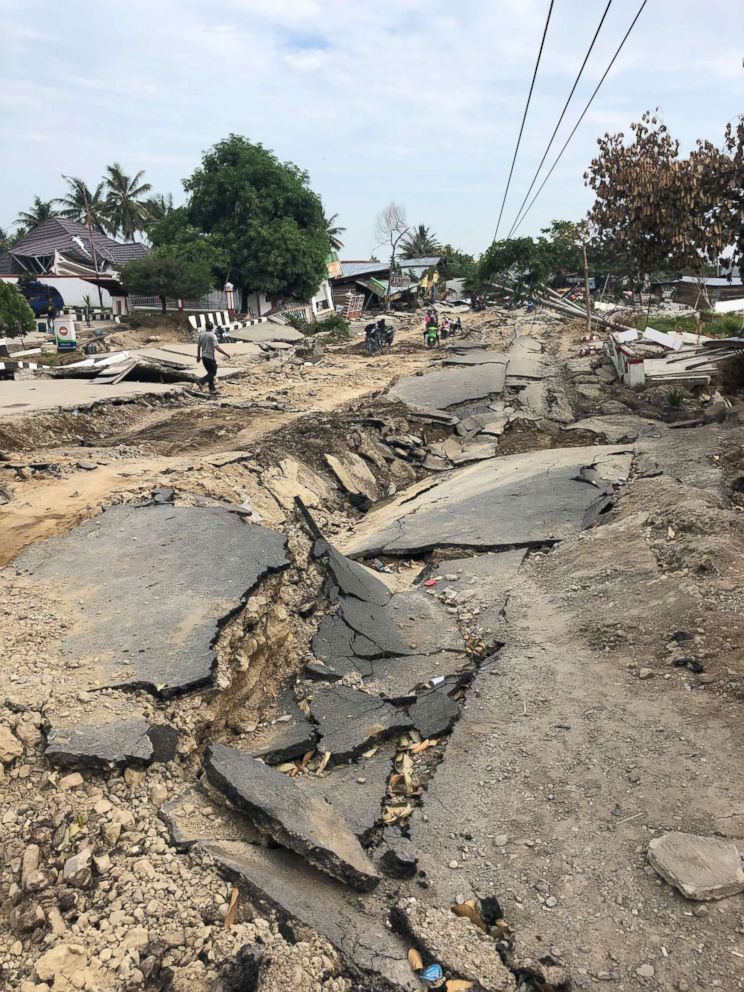
We went by bike, dodging and weaving through the huge crevices the quake had opened up, and the power lines and other debris it had brought down. Makeshift signs along the road read "please help us."
At last we came to the end of a road, stopping abruptly like on a cliff's edge. Our guide pointed ahead, "The church," he said.

But it was just a field. The church -- and all the buildings around it -- had been completely swept away. The field we were looking at had effectively replaced it. Standing on the edge of the broken road we could glimpse the other end of the highway, maybe half a mile in the distance. Everything between us and it was gone.
Inika, a 27-year-old woman who was there when the quake struck, described the earth opening up around her. Water and mud spouted up through the cracks, homes and trees "danced" as they were moved along.
Surrounded by her family and with cuts on her face and arms, she told me she held on to a coconut tree, finally finding herself near a village 2 miles away. She said 20 of her friends are missing, and "hundreds," were buried in the mud. She had received no help from the government's emergency response in the week since the disaster.
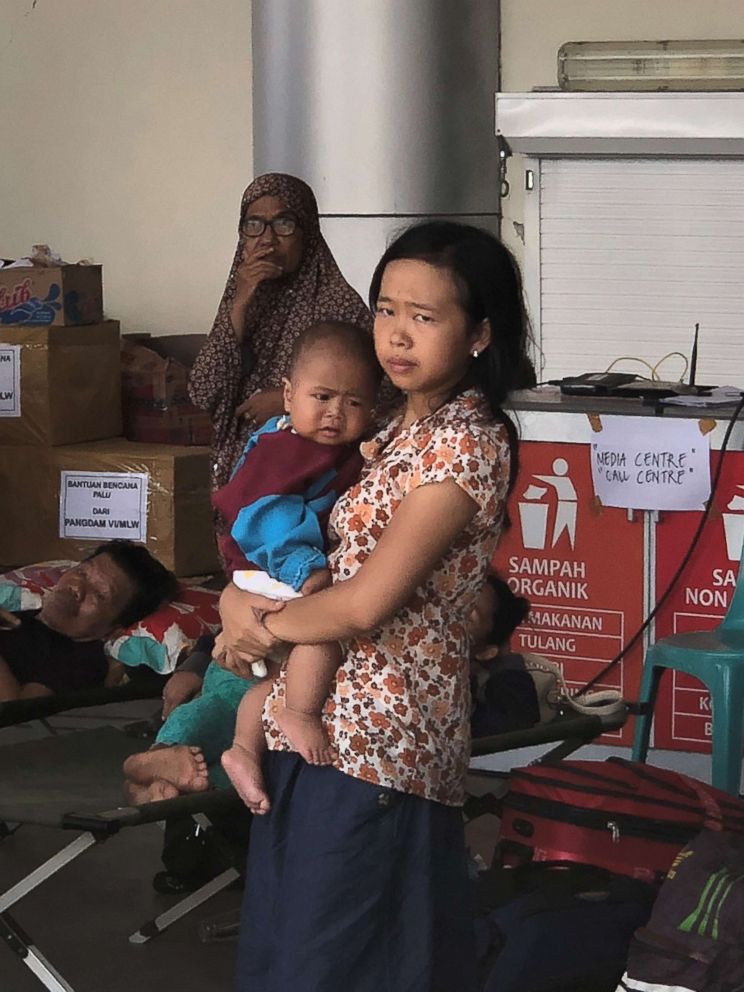
The empty field we were looking at, sitting quietly as though it had been there for years, is now most likely filled with bodies.
Authorities say at least 1,649 people are known to have died, but many more are missing.
If there are more fields like this around Palu, that number will surely rise.
